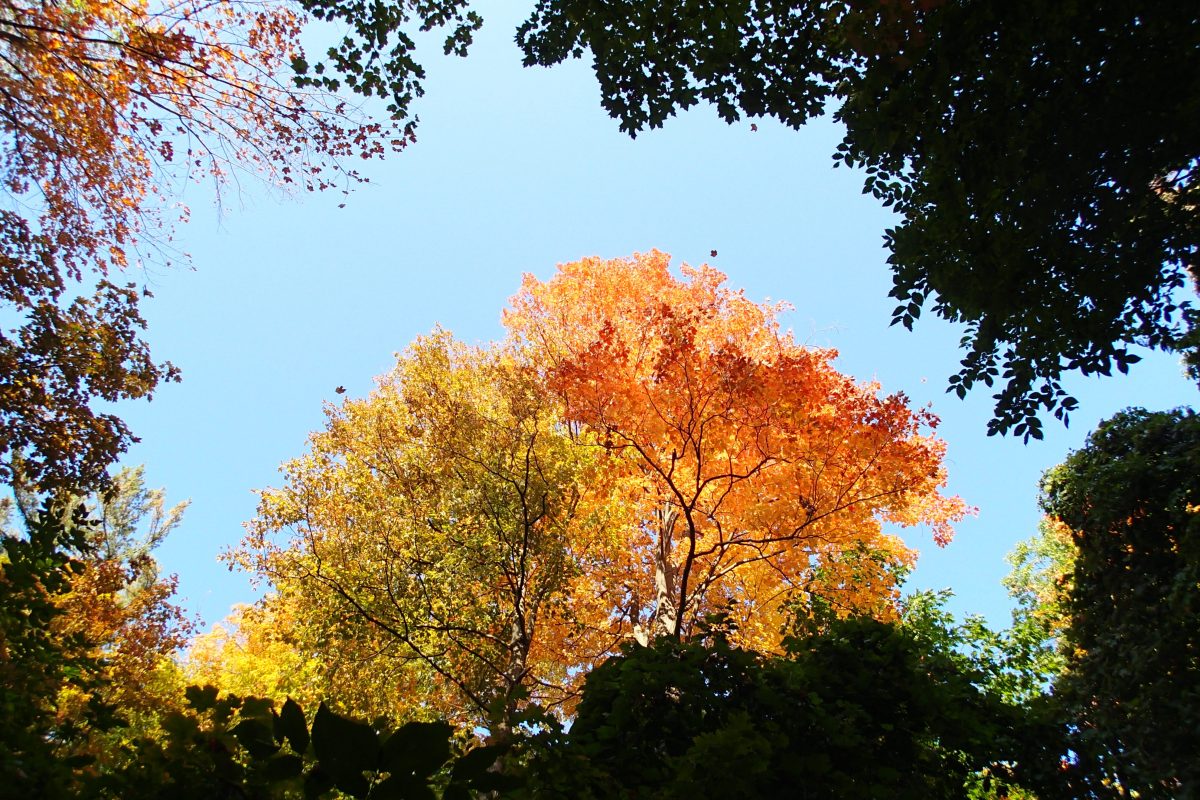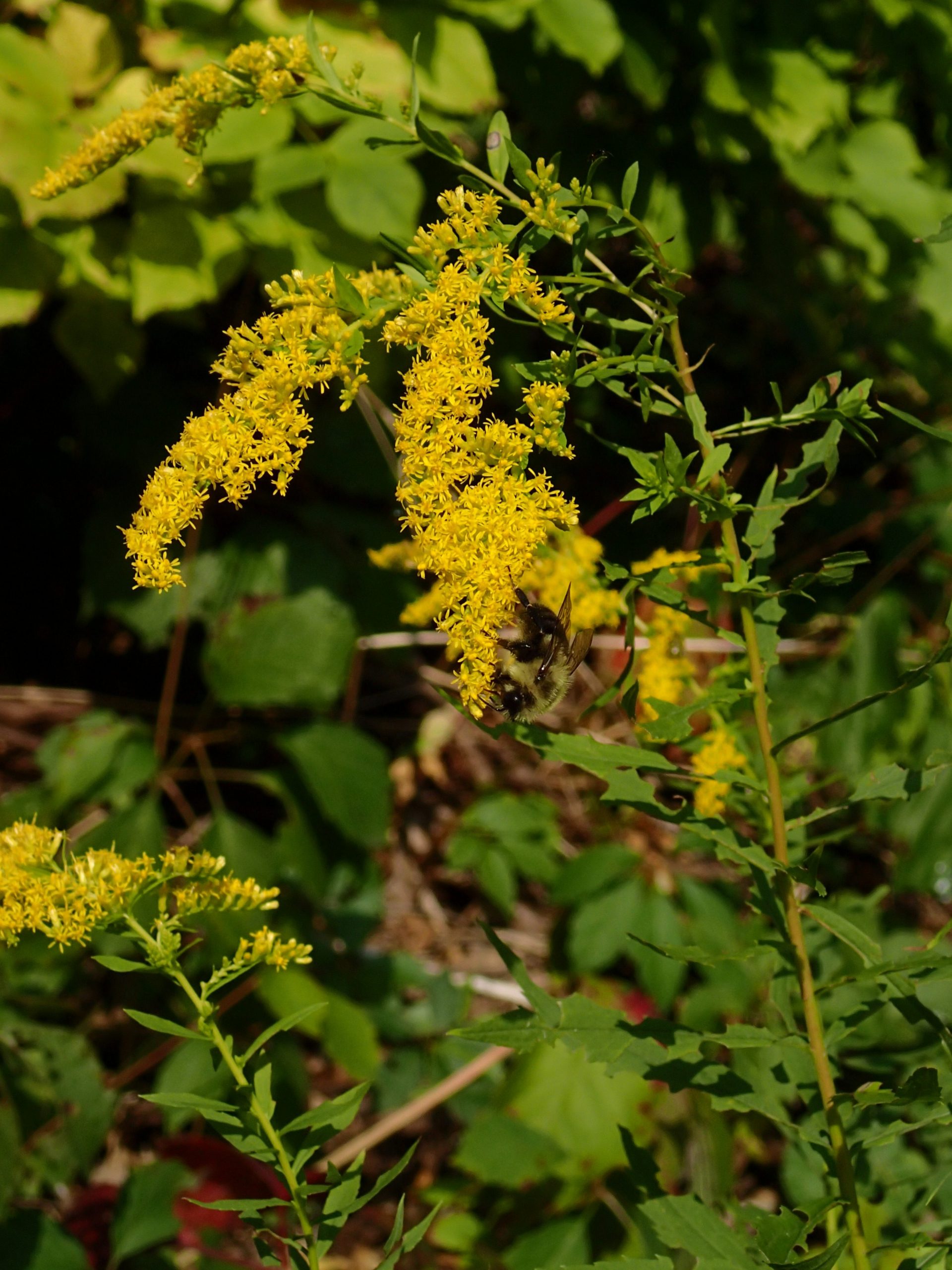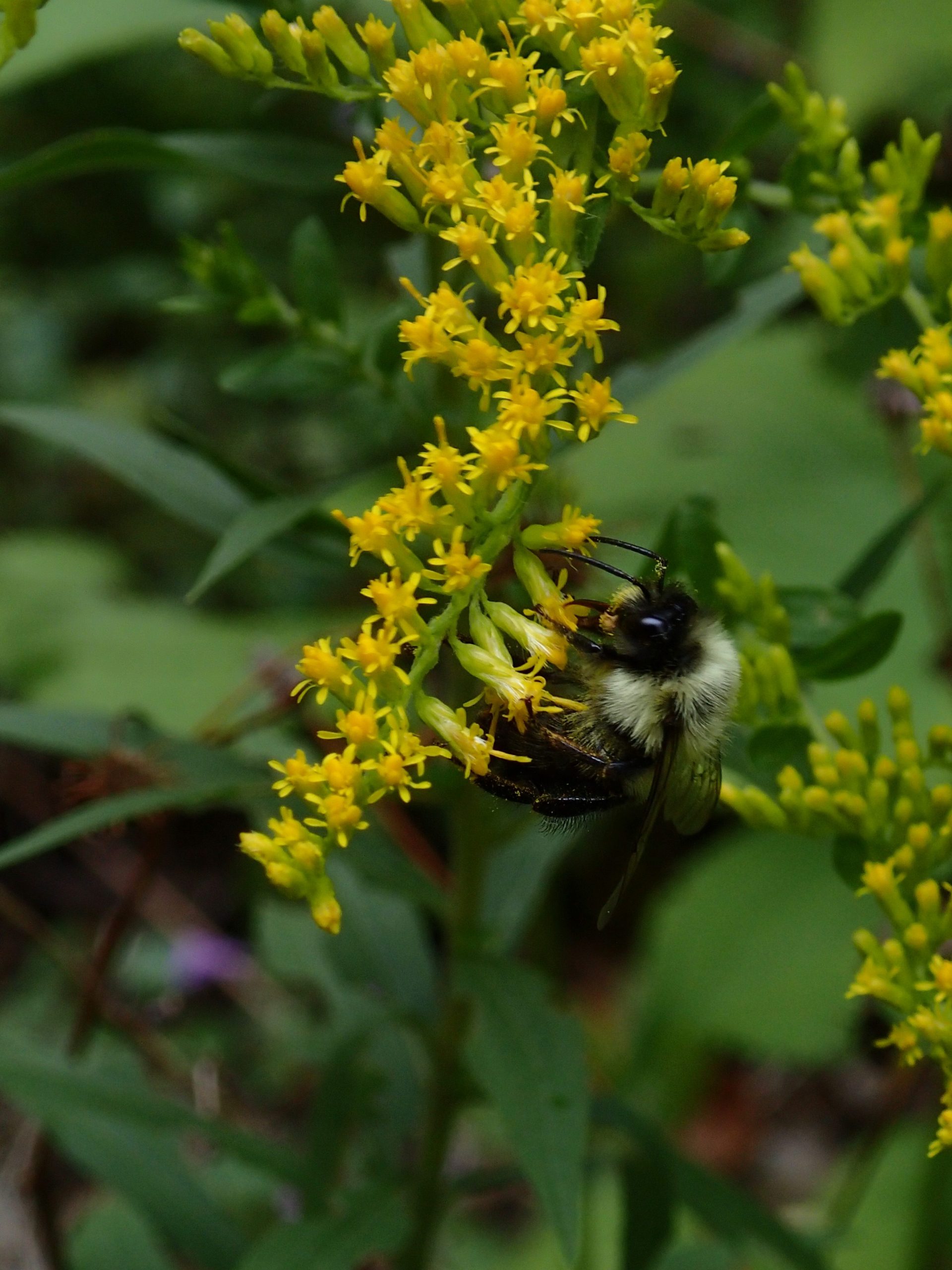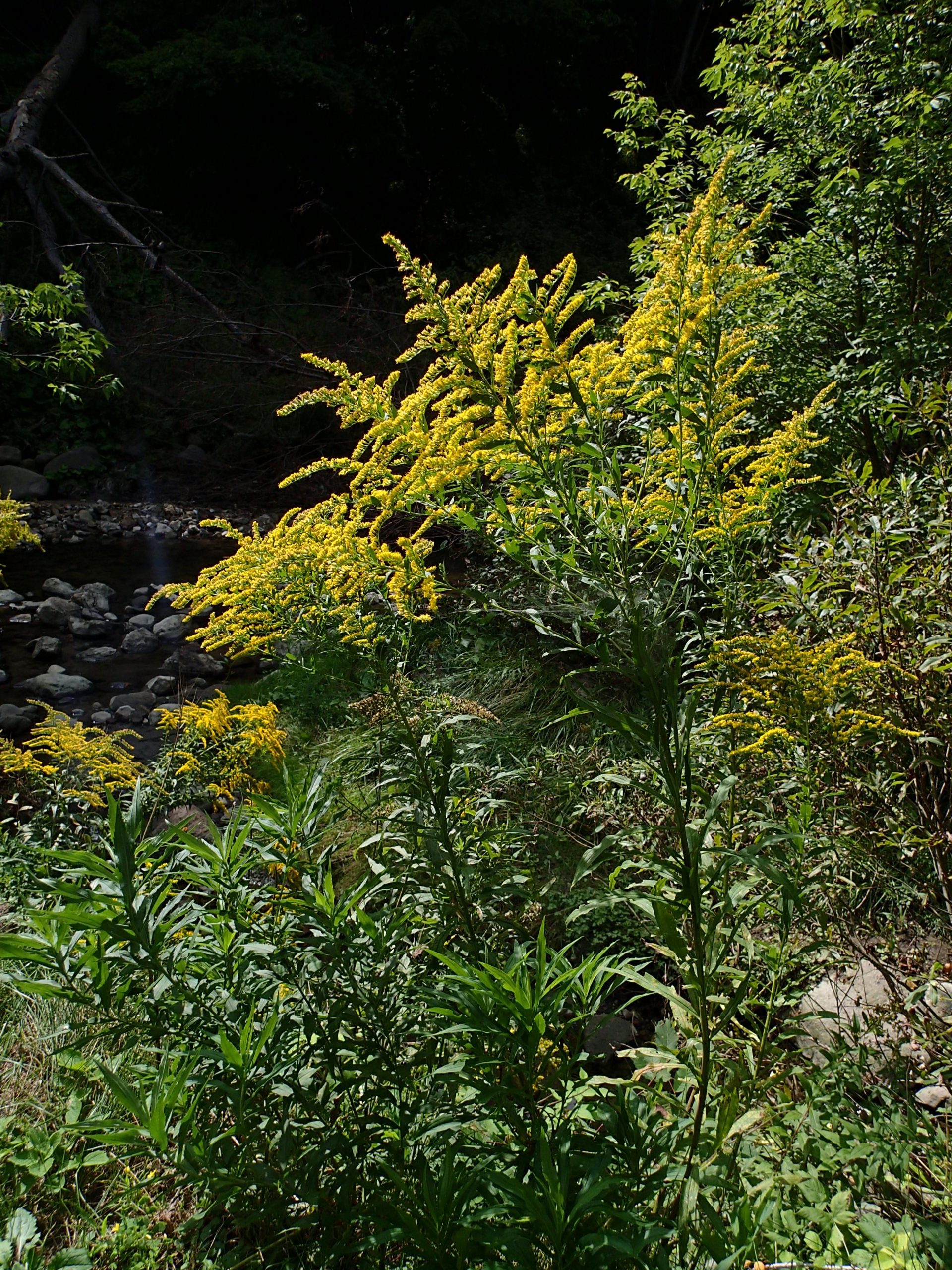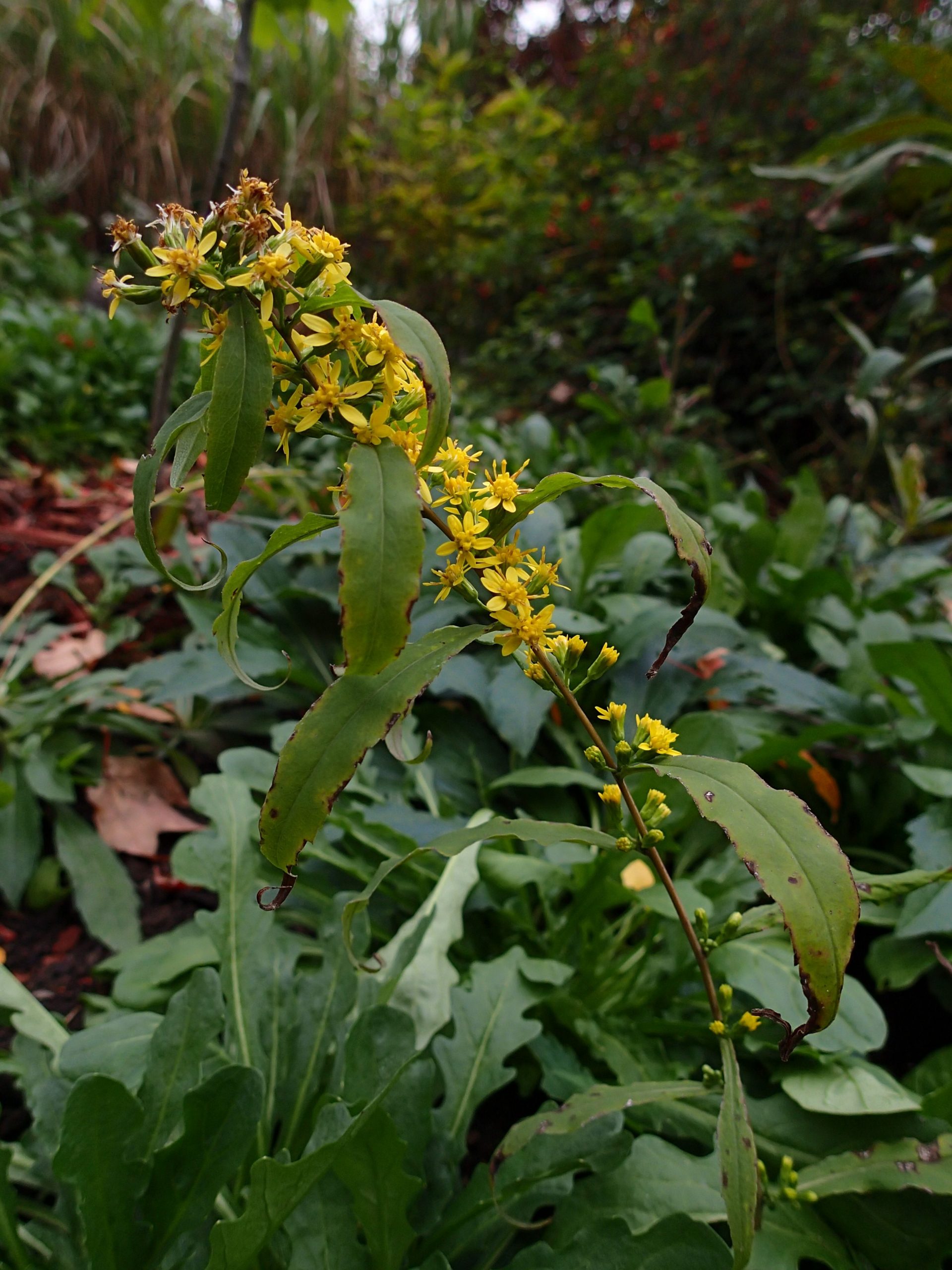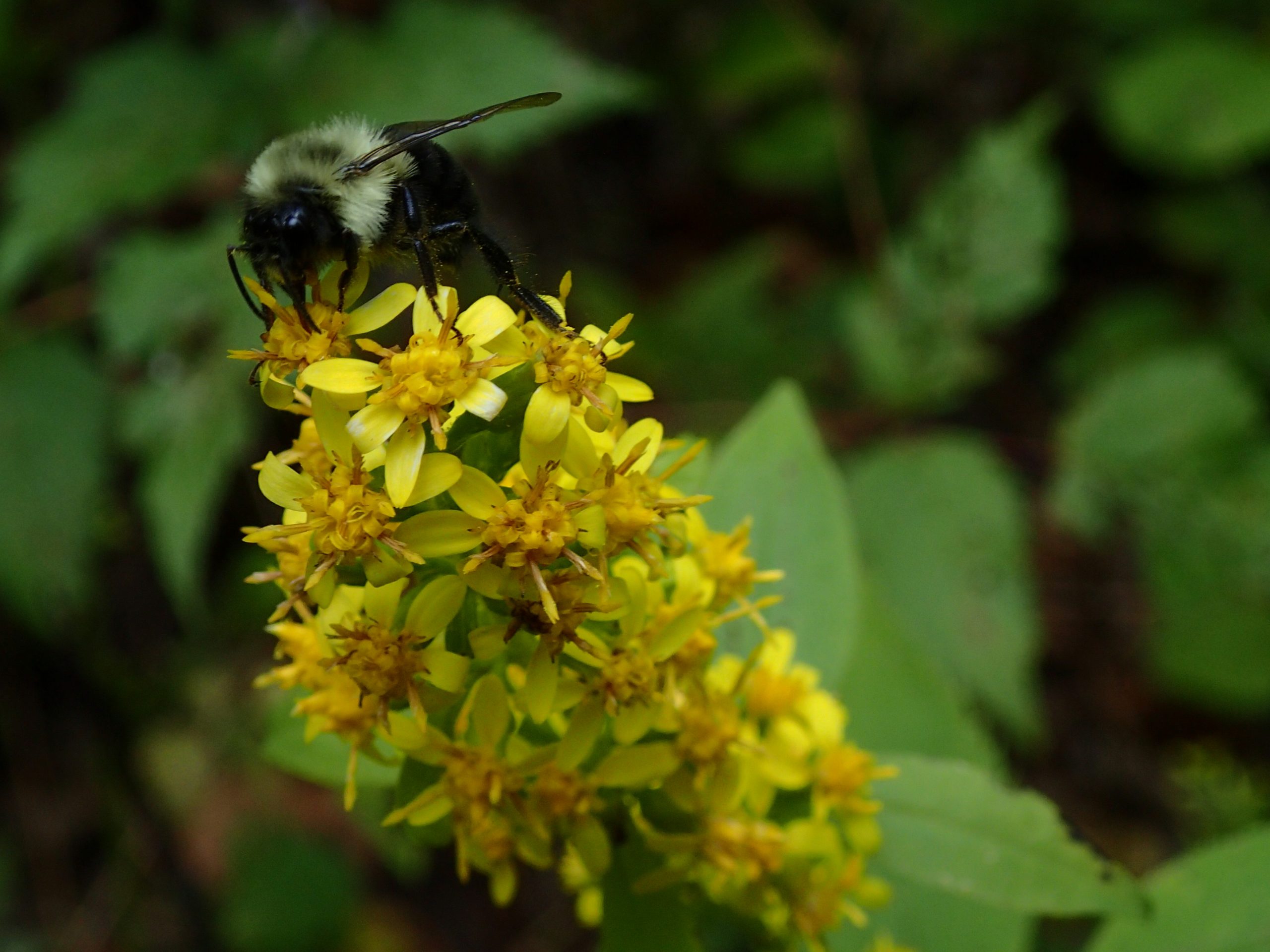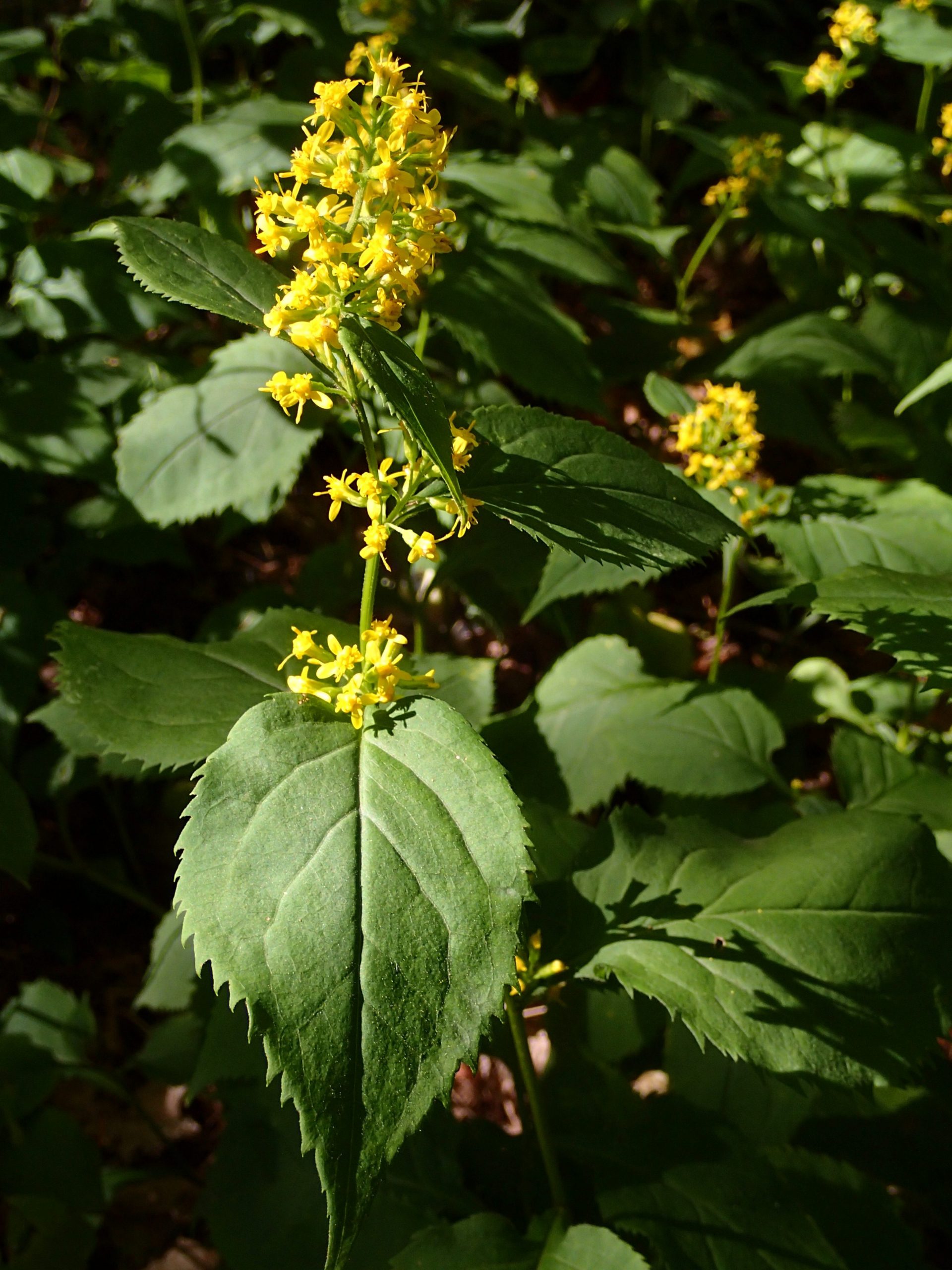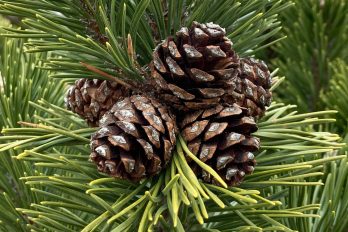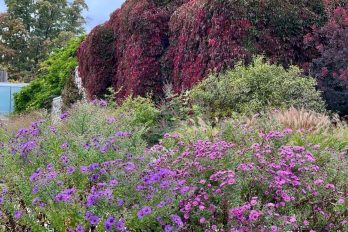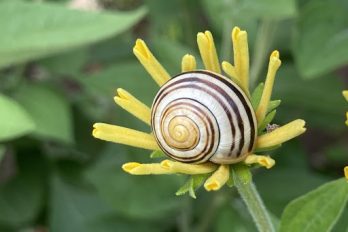Goldenrods (Solidago sp.) are characteristic of fall, adding bursts of colour to the landscape. Most people associate goldenrods with open fields, however, there are many woodland and wetland varieties as well. Belonging to the Asteraceae family, goldenrods have composite flowers combined to create large showy yellow inflorescences. A diverse genus in Ontario, they include about 31 native species. Some goldenrods are prolific spreaders like S. canadensis, but there are also many other lesser known non-aggressive native species. All native goldenrods, however, provide important ecological values.
Goldenrods were found to support more butterflies and moths than any other perennial in the eastern US, providing food and shelter for 115 species (Tallamy, Bringing Nature Home, 2009). In addition to being an important late nectar resource for insects, goldenrods provide a valuable food source for foraging birds during winter when food resources are low. Birds consume goldenrod’s seed heads, and insects overwintering in their galls. Galls are growths, often observed as swellings in the stem. Goldenrod galls are formed by insects such as the goldenrod gall fly which completes its juvenile stage in the goldenrod, providing food for birds like the downy woodpecker.
Featured here are native goldenrods observed in Wilket Creek field surveys and at TBG, including:
Zig-zag Goldenrod (Solidago flexicaulis)
Canada Goldenrod (Solidago canadensis)
Blue-stemmed Goldenrod (Solidago caesia)
Silverrod (Solidago bicolor)
Autumn colours are on display in Wilket Creek ravine, the vibrant reds and oranges from the iconic native sugar maple (Acer saccharum) and red maple (Acer rubrum). Colours are due to the yellow-orange carotenoid and red anthocyanin pigments which appear in the leaves, as the green pigment chlorophyll breaks down.
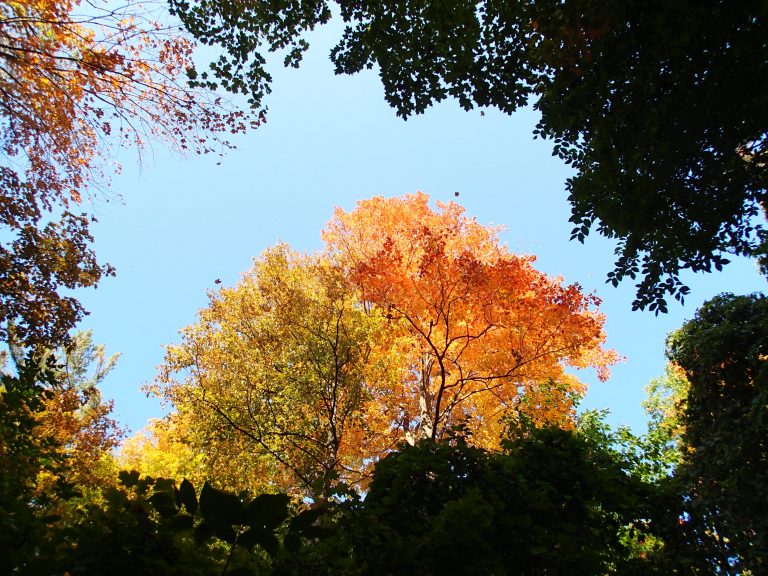
With invasive non-native Norway maple (Acer platanoides) invading natural areas and displacing native trees, we risk losing this iconic fall foliage of our forests. Norway maples do not produce the same vibrant colours as our native maples, instead turning brown or yellow, and often covered in unsightly black tar spots. Norway maples in Wilket Creek ravine, along with other ravines in Toronto, originate from escaped landscape plantings. They negatively impact our forest ecosystems by providing poor habitat for native insects, which in turn means fewer birds foraging on their branches. Norway maples also inhibit ground flora and native tree regeneration.
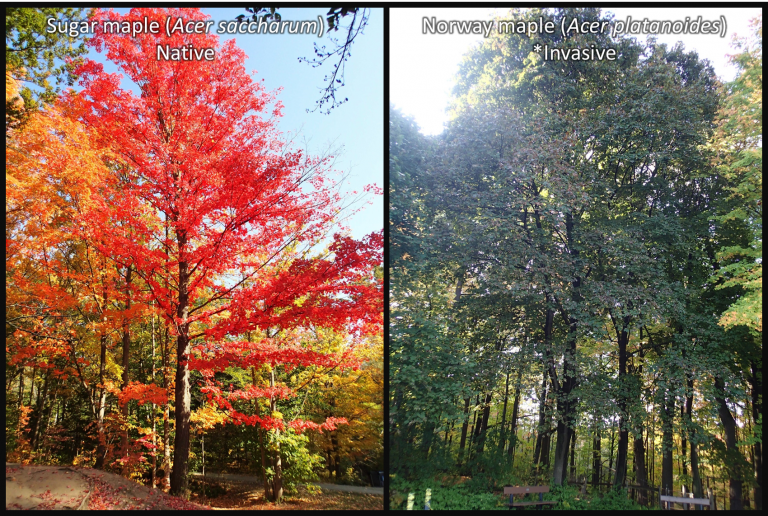
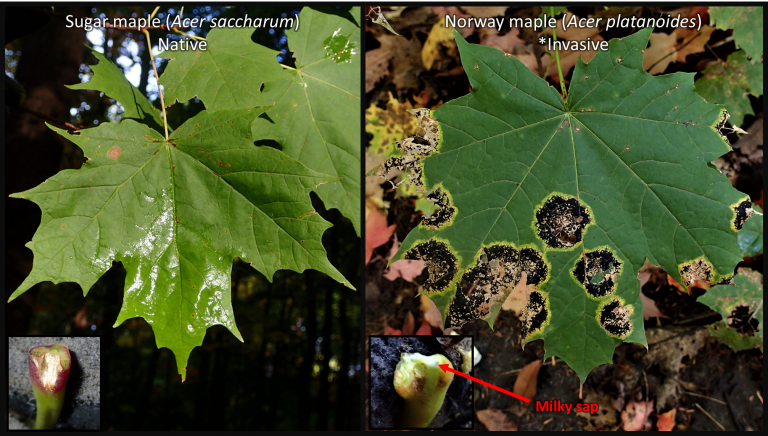
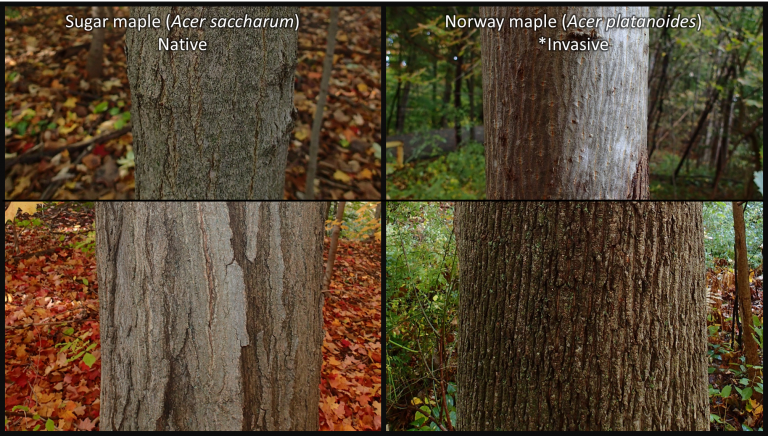
Here are some ways to differentiate invasive Norway maple from native sugar maple:
Leaf – Norway maple leaves are wider and have more lobes (5-7), compared to sugar maple with fewer lobes (5). Norway maple also often has numerous tar spots on its leaves, while sugar maple is less affected.
Sap – Norway maple emits a milky white sap from the stem, while sugar maple sap is clear.
Bark – Norway maple bark is smooth and vertically striped when young, but with shallow grooves when mature often in a diamond pattern. In comparison, sugar maple tends to be rougher and with vertical ridges that often curl outward.
Fall Colour – Norway maple typically turns brown or yellow, while sugar maple turns orange to red.
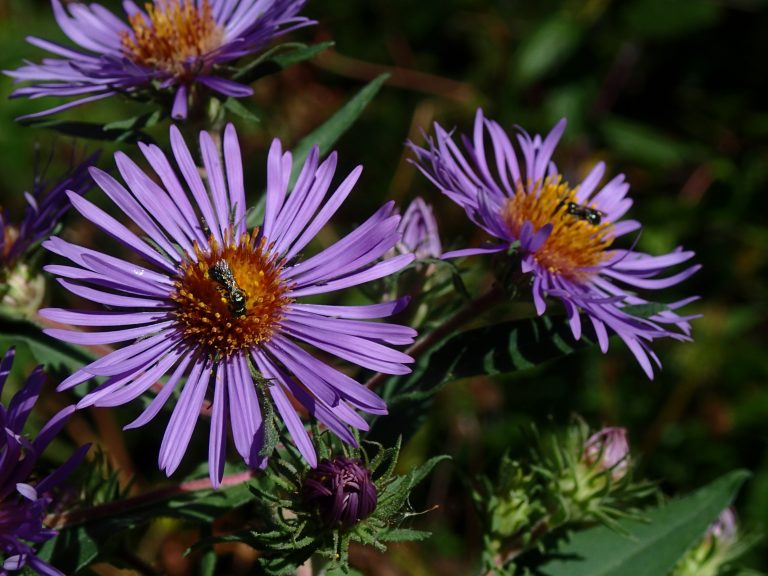
When summer wanes, few plants are as vibrant as asters, colouring the landscape in an array of purples, blues, and whites. Typically flowering late summer and fall, native asters are an important late nectar and pollen source for insects, and their seeds an important food source for birds. There are ~30 asters native to Ontario, the largest and most common group being the American asters (Symphyotrichum sp.). Pictured here are asters observed during flora surveys in Wilket Creek ravine, showing just a fraction of the wide variety in our native asters. Native asters range from woodland, grassland, to wetland species, and vary in colour from white to sky blue, and pink to deep purple.
Pictured here are native asters:
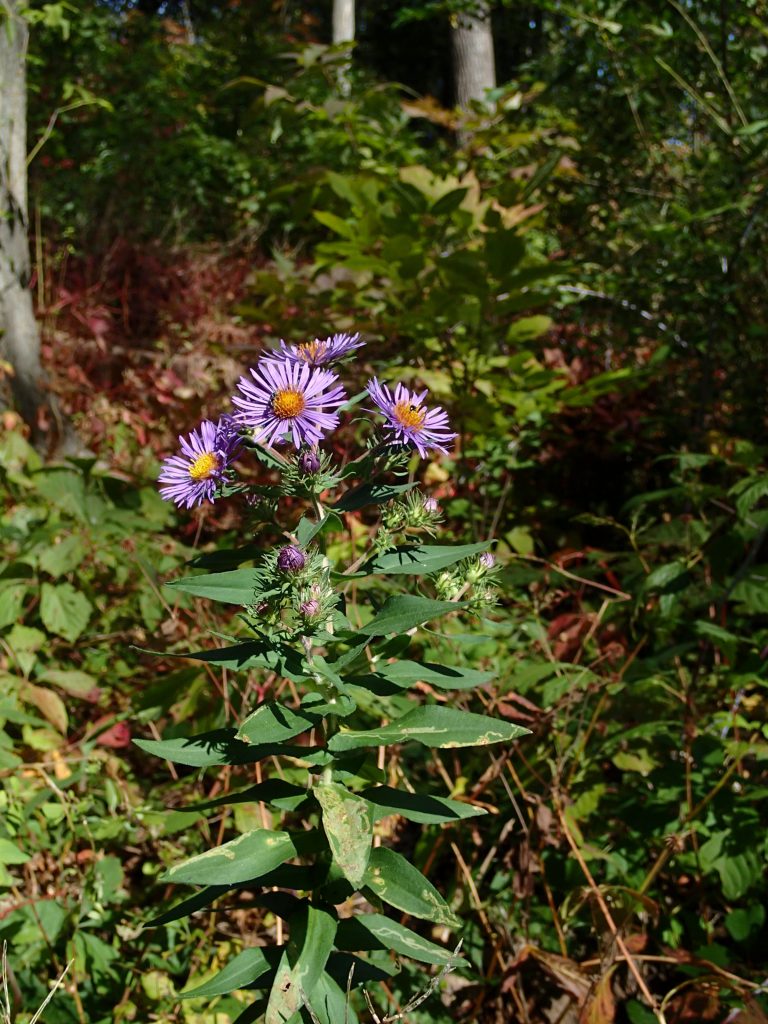
New England aster (Symphyotrichum novae-angliae)
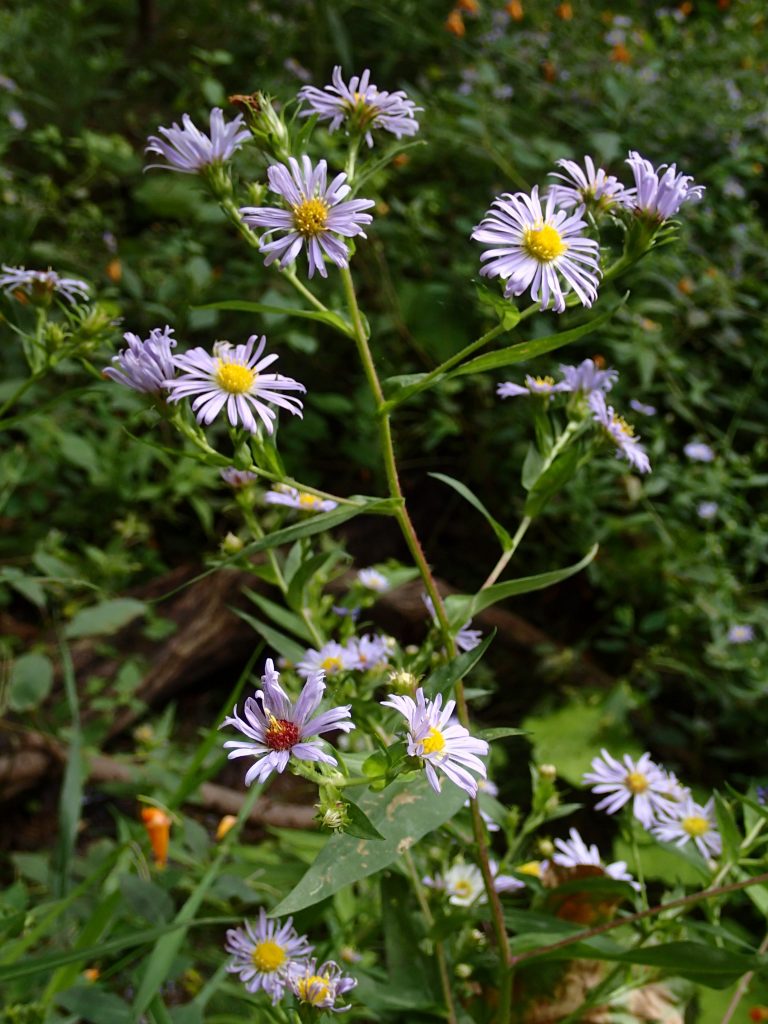
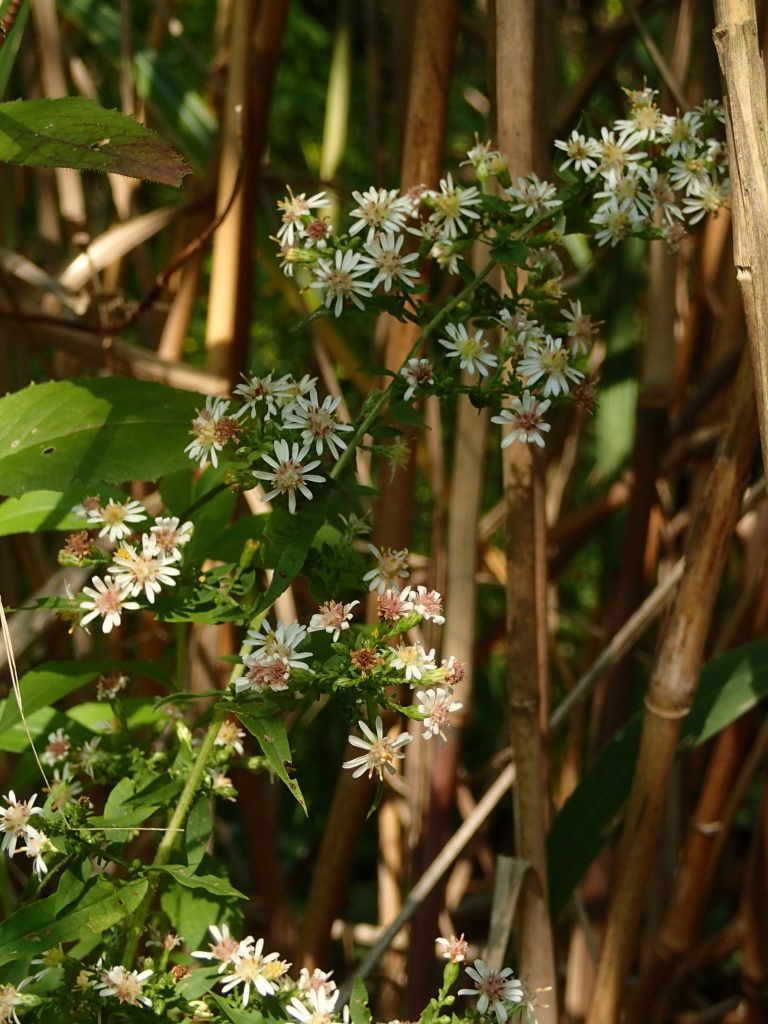
Calico aster (Symphyotrichum lateriflorum)
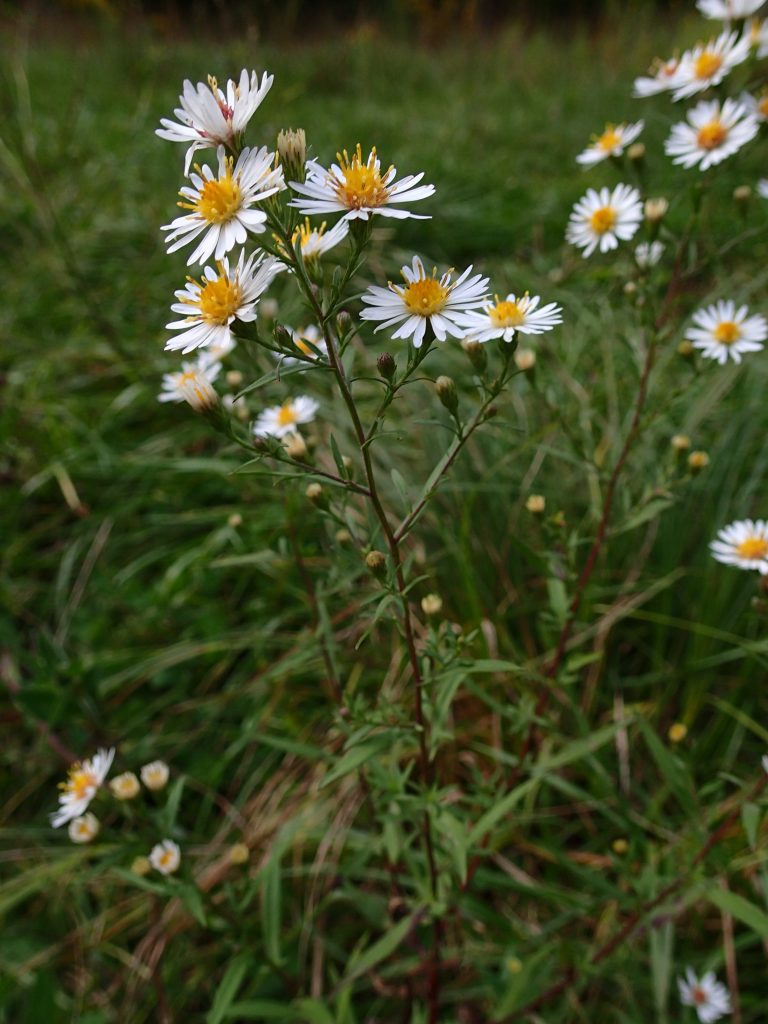
Panicled Aster (Symphyotrichum lanceolatum)
Photo Credit: Katherine Baird, Ecologist

